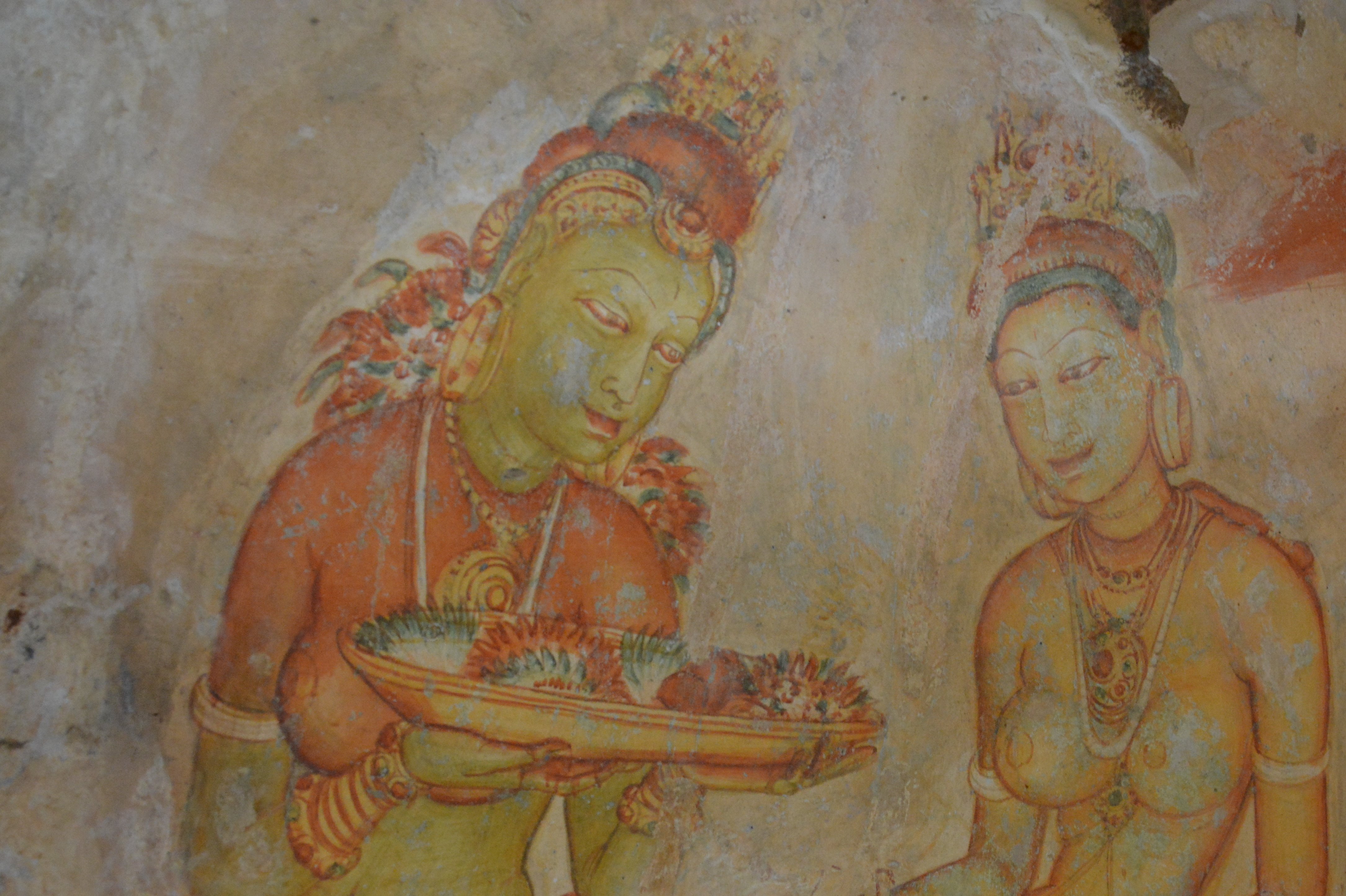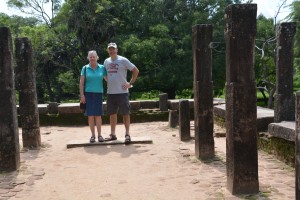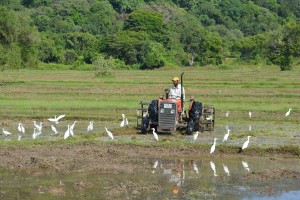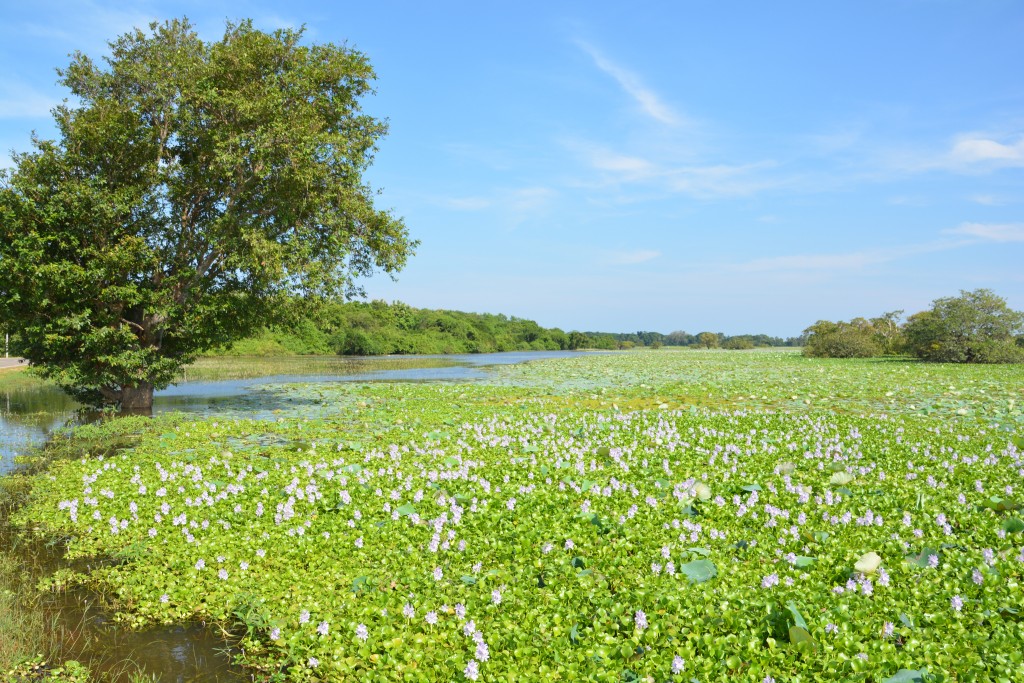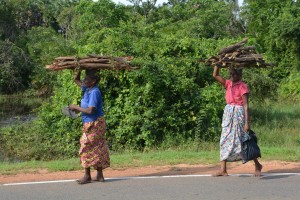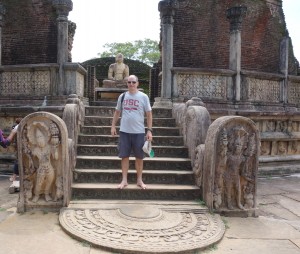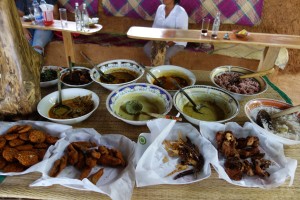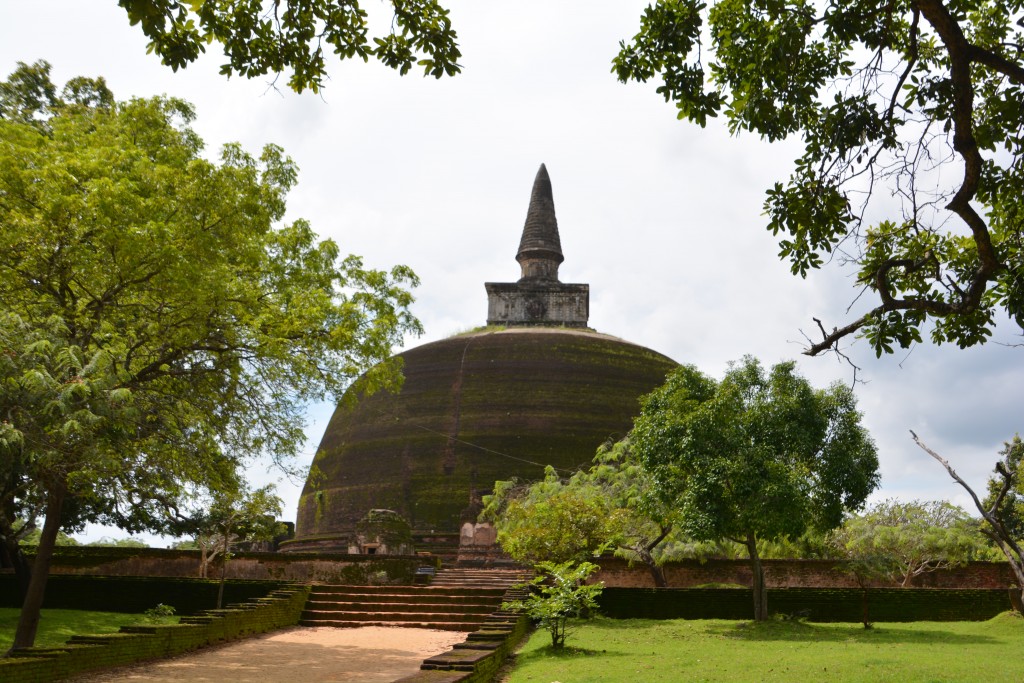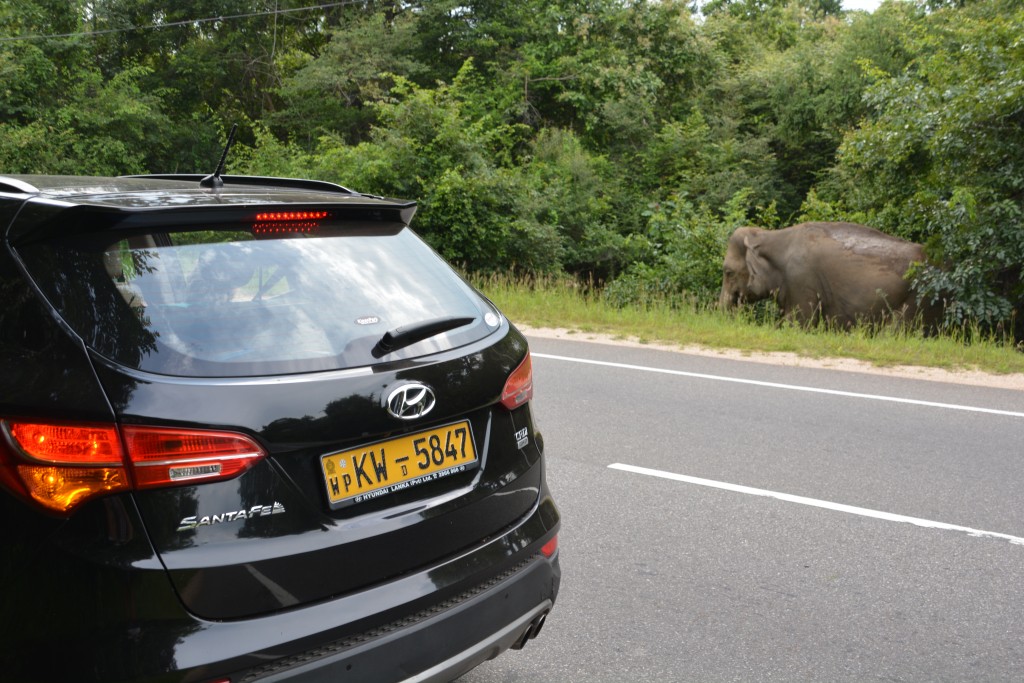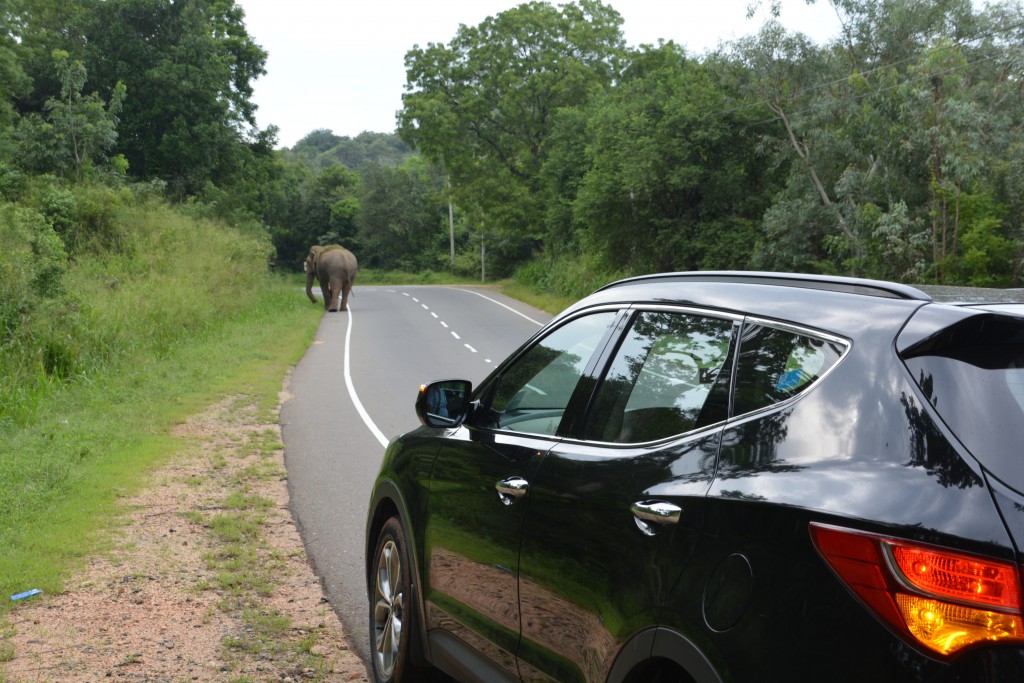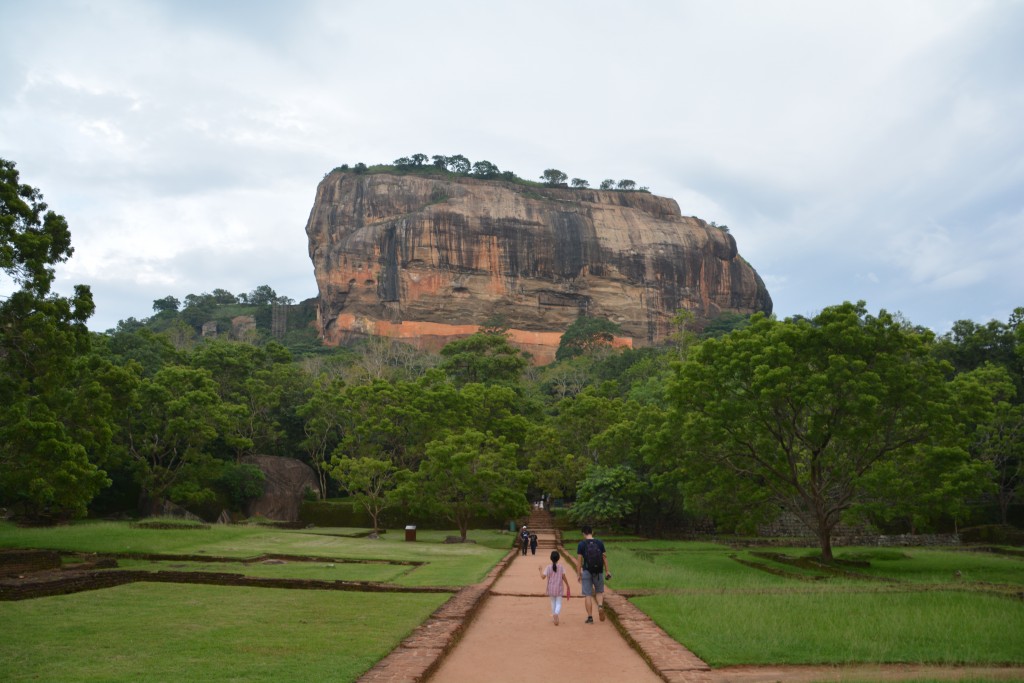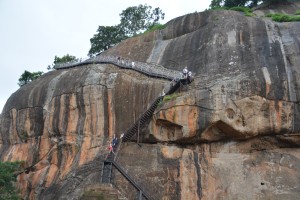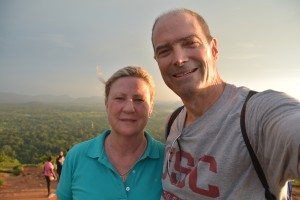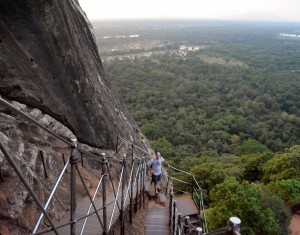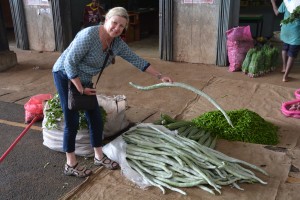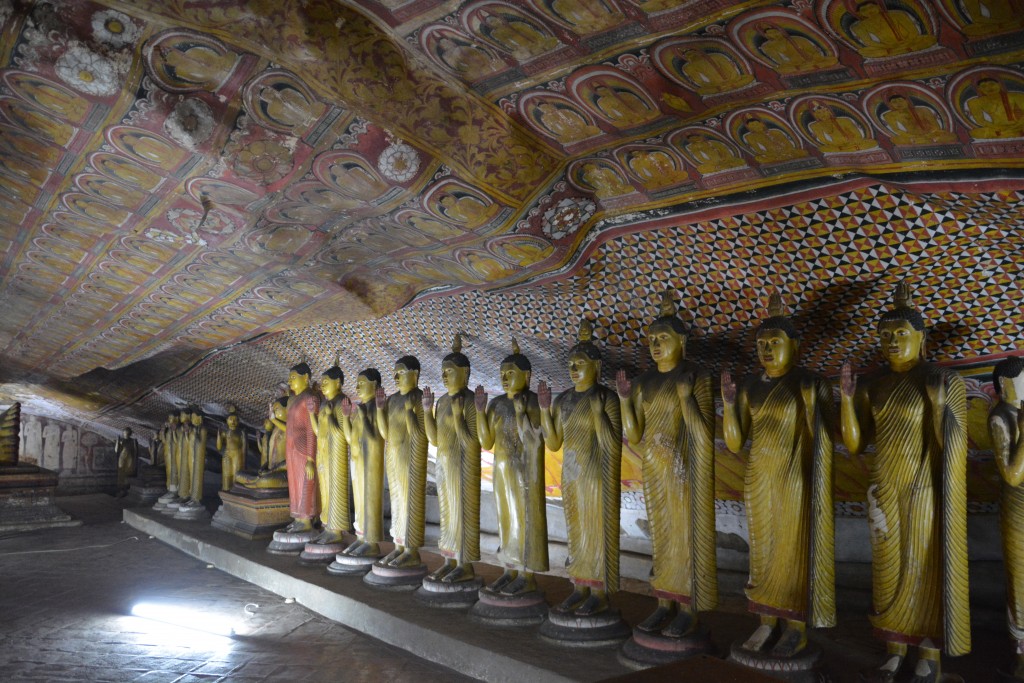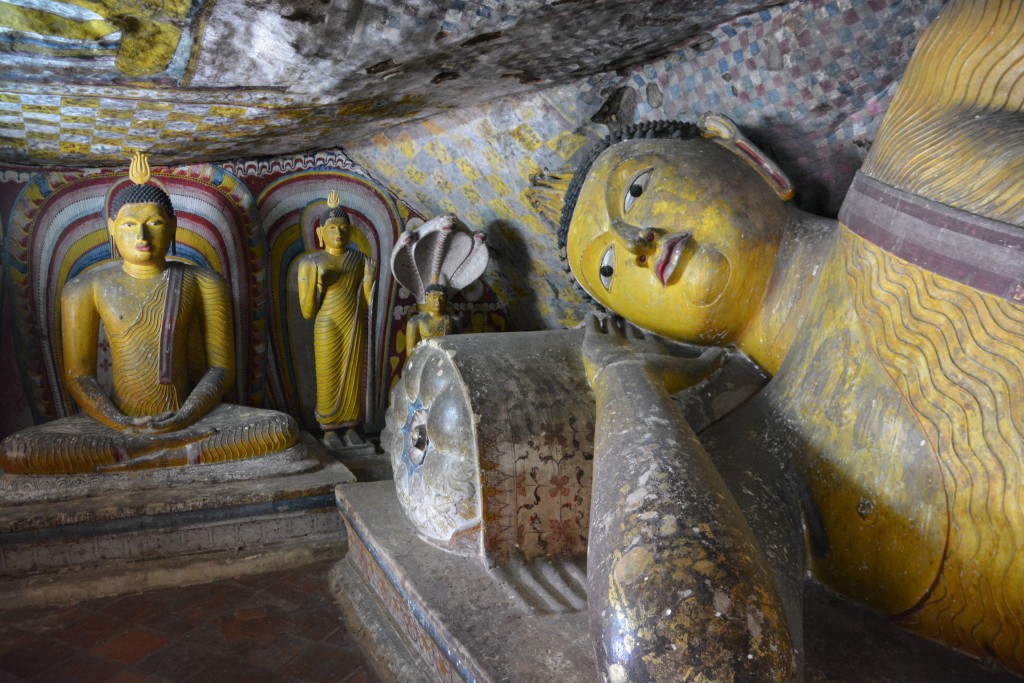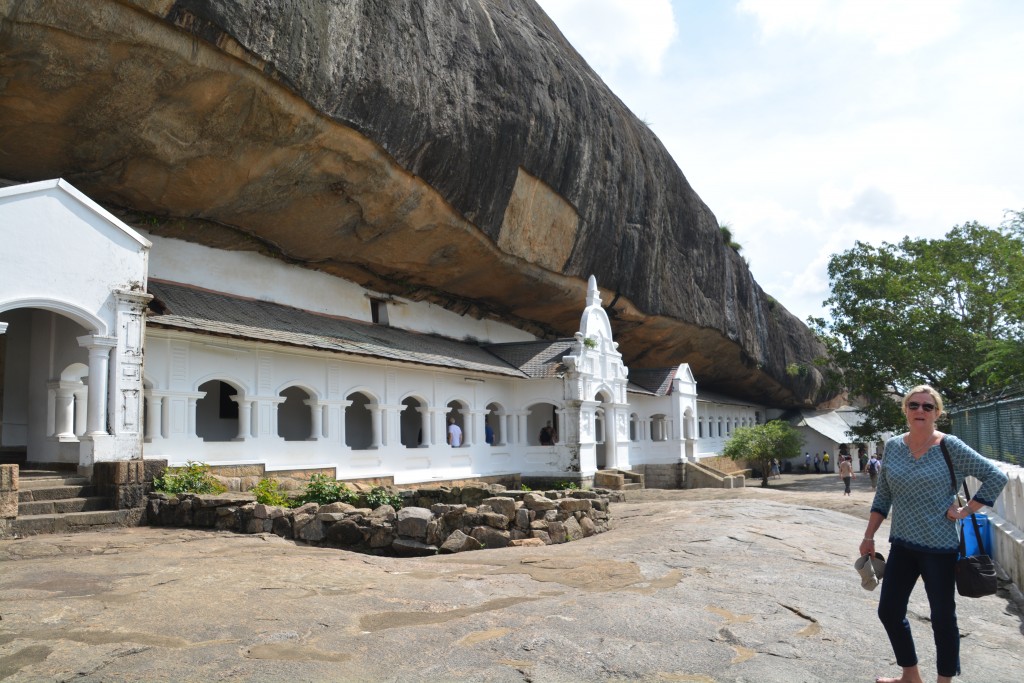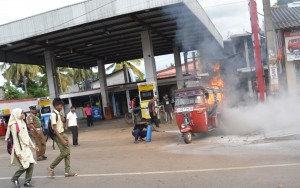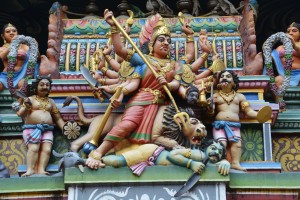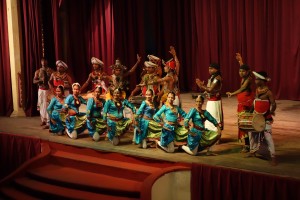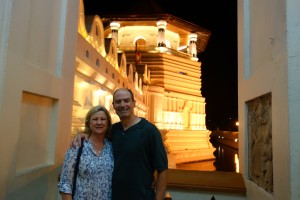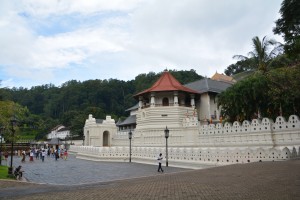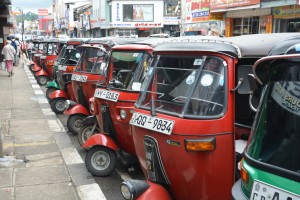On the road to see a tooth
Polonnaruwa was the capital of Sri Lanka around the 11th and 13th centuries and today is set amongst rich farm land used primarily to produce the country’s staple crop, rice. The remains of the ancient city tell a fascinating story of its glorious past and we loved exploring the many impressive remains from the original buildings of that era. Who would have ever guessed this sleeping giant of culture and history had so much to offer? And like Anuradhapura, Polonnaruwa is also a UNESCO World Heritage site.
The land around Polonnaruwa also featured many huge marshes and waterways – after all, we are in the country of 10,000 lakes – most featuring beautiful water hyacinths, huge lotus leaves and colourful water lilies. In some cases the farmers were preparing their fields for planting on small tractors rather than using the traditional back-breaking hoe. We know from Thailand these tractors are sometimes owned by an entire village or co-op and shared amongst the farmers.
The most important feature of ancient Polonnaruwa, so said our new local guide Mr. S., was a huge dam built by the first king back in the 11th century. This dam formed a huge lake, or tank as the locals called it, which had massive huge walls, complex irrigation systems and a system of controlled canals which meant this tank brought life and prosperity year round to the locals.
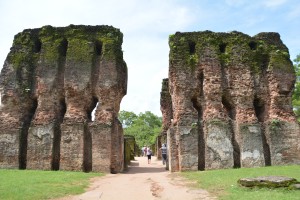
The Royal Palace must have been quite a building – first three floors of brick and the next five of wood
The Royal Palace of Polonnaruwa must have been quite a building in its day at seven stories high and the grounds around the palace had many other structures such as the impressive royal baths and homes for the king’s 150 concubines. But on our visit the heat was full on, hovering around 35 degrees, very high humidity, no shade and no breeze. The first ice cream came around 10am.
We also visited the Sacred Quadrangle in the centre of this ancient town, with two different buildings that at one time housed the Buddha’s Sacred Tooth Relic (more on that later) and other impressive structures. As we stood in this quadrangle amongst the remains of its old buildings it was easy to imagine the locals going about their business in the centre of their empire one thousand years ago. Very cool.
After a curry and rice lunch that featured breadfruit curry, jackfruit curry and lotus stem curry we left Polonnaruwa and passed through Minneriya National Park, home to many wild elephants (Sri Lanka is said to have 6,000 wild elephants). And sure enough, as we crossed a bridge on the corner of the huge lake, there was a large elephant foraging in the shallow water amongst the hyacinth. Our first elephant in Sri Lanka! We climbed up on the bridge to snap a few and admire him from 400 metres away. Two young boys walked by and claimed he was their elephant and his name was Raja. Well, Raja it was!
We got back to the car and told Mr. T his next task is to get an elephant a bit closer to the road so we could get a better look. No sooner had he made the next bend when there was a huge elephant eating the tall grass and vines right next to the road. We quickly jumped out and shot a few more photos but as the elephant moved towards us Mr. T got nervous and we drove off.
Then, another corner, another elephant, this one standing on the bitumen, almost blocking the road. More photos and Mr. T carefully drove around the big tusker, as the locals call them.
Our next stop was a site called Sigiria, one of the most photographed places in Sri Lanka. So we recognised the scene well before getting there as this massive volcanic plug with near vertical walls rose 400 metres from the flat jungle plains. Julie said, “We’re going to walk up that?”
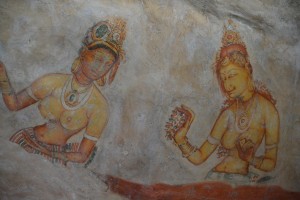
These beautiful frescos of the King’s concubines were painted in spectacular suspension on the cliff face
Sigiria holds a special place in Sri Lankan history and features an ancient palace on its flat top. The problem is getting up there which from the base seemed almost impossible. But it was a bit cooler this late in the day, Mr. T pointed in the general direction and off we went. After some steep stairs leading up to the base of the vertical escarpment we came to a spiral staircase that led directly up the cliff face to a ledge and a caged box. From this caged box we saw beautiful frescos painted on the cliff face, extraordinary images of buxom young topless girls, apparently the King’s concubines. How the artists managed to paint these in the middle of this cliff face before rickety rusty spiral stairs were invented I know not.
We climbed the steel stairs bolted into the rock face and eventually reached the flat top of the rock, breathless from the exercise and the spectacular view that surrounded us. It was very late now, the sun was low, there were only a few remaining people on the top and both lightning and rainbows could be seen in the distance. The setting was surreal as we walked amongst the ruins, past the king’s infinity pool and out on the ledge where we sat for a moment and took this scene in. In those moments before the sun was lost the panorama spread out before us was just beautiful.
But with darkness coming we quickly – but as safely as possible – retraced our steps down the steel stairs, along the ledges and across the rock face. And at the base of the rock in the total darkness we could see one flickering light ahead of us. Yes, it was Mr. T, slightly worried about us, he had come up the trail a little way and was using the light on his phone. Sigiria had become our favourite experience on the trip thus far – just extraordinary.
We woke the next day to the sound of the jungle in our little bungalow, our hotel tucked back on a rough dirt road amongst the muddy rice paddies. The nearby town of Dambulla featured a huge vegetable market which was euphemistically called the Dambulla Economic Centre.
This was really three huge transfer stations where fresh vegetables were brought in from villages and farms in the area and reloaded into a variety of sizes of trucks for other destinations. We enjoyed our stroll amongst the busy locals, seeing more new vegetables, including a classic long cucumber type thing which Mr. T later called the snake vegetable. Not imaginative but accurate.
The Dambulla Rock Temple, positioned high above the town at the end of another melting climb, was an unexpected joy. The temple featured beautiful gold Buddhas and colourful paintings on the rocks inside a series of five caves hidden on this obscure cliff. The walk up was somewhat demanding in the early morning heat and by the time we reached the caves we were literally dripping in sweat. But the caves made it all worthwhile, a place of worship as far back as the first century BC, but now with over 150 Buddhas, some dating back more than 1,000 years, plus beautiful paintings on the walls and ceiling from the 19th century.
The road on to Kandy started to climb into the mountains and the rice paddies all but disappeared. At the town of Matale we stopped at a Herb and Spice Garden for an informal tour of the garden featuring an amazing array of different herbs, spices and chilies that go into Sri Lankan and international food. Our guide was impressed with Julie’s knowledge of all these spices, his all too frequent obscure questions often answered correctly by Julie – very impressive.
At the other end of Matale we stopped briefly at an imposing Hindu temple, as big as we’ve ever seen, with elaborate and colourful characters covering the roofs and the tall spire. I’m sure it must all mean something to the devotees but to us all the costumes, facial expressions and poses – some graphic or violent – were almost comic.
The town of Kandy, the last imperial kingdom of Sri Lanka before the British colonised them in 1815, is home to the famous Tooth Relic. But before we visited the temple which hosts the Buddha’s tooth we indulged ourselves in an Ayurvedic massage and spa, one of Sri Lanka’s specialties. The key feature to an Ayurvedic massage is the oils, and as we found out, lots of different oils which apparently have various therapeutic features attributed to them. Meh, the massage was okayish but we gave the whole thing the thumbs down, deciding we prefer Thai massages. All part of the experience.
Into Kandy, a bustling regional centre of over 110,000 nestled around the picturesque lake that was built by the last king in the early 19th century, and the home to the huge temple that hosts the Buddha’s Sacred Tooth Relic. I had been to this temple many years before and it is one of the absolute must-see items on any Sri Lankan visit.
Our evening visit to the temple gave us a chance to see ‘the procession’, although we weren’t sure what that was. The exterior of the temple was spectacularly lit up and we went inside with all the other tourists, past the loud drums and into the long slow queue weaving its way to see the tooth relic. Eventually we made it to the little window and had a fleeting glimpse of a very beautiful sparkling cone-like casket where the Buddha’s tooth allegedly lives. It turns out we didn’t come to watch a procession, we came to be in the procession.
The tooth relic has existed since the 6th century BC when it was plucked out of the Buddha’s cremation pile. It has since travelled extensively, first to Sri Lanka, back to India, the Portuguese stole it once (sorry, that was a replica) and it has stayed in many temples along the way. Since the 16th century it’s been in Kandy and now lives in this grand temple. Or so they say.
The Sacred Tooth Relic is very important to the Sri Lankans. The temple is the holiest site in Sri Lanka and clearly the Relic is a major focus to their religious beliefs and as a symbol of their history and independence. We were privileged to be part of this important experience.
